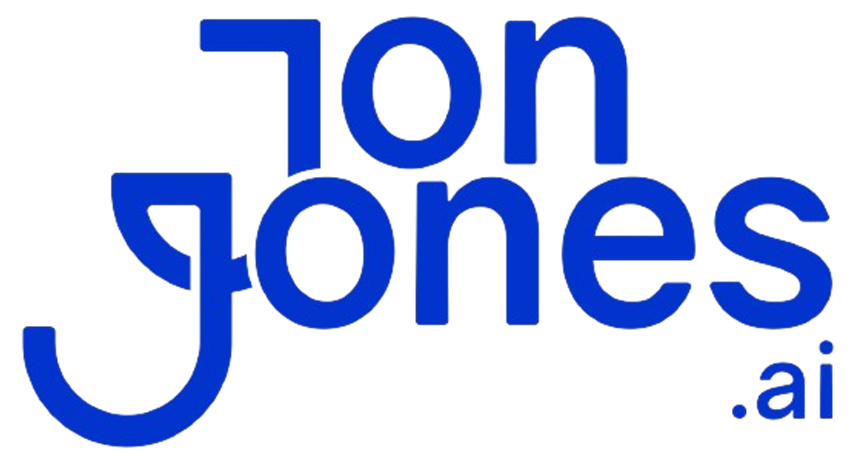Ever feel blindsided by a sudden sales slump or market shift? You’re not alone.
Imagine a free tool that can match Fortune 500 forecast engines. That’s open source predictive analytics (software that uses data to forecast what’s next) in action, crystal-clear insights, no license fees.
Next, we’ll walk you through six top contenders, from scikit-learn’s classification (sorting data into groups) to H2O.ai’s AutoML (automating model building). Then you’ll pick the tool that fits your team and watch your forecasting accuracy climb.
Complete Comparison of Open Source Predictive Analytics Tools

Imagine turning last year’s data into a roadmap for next quarter. That’s the power of predictive analytics software. It uses historical data and algorithms (step-by-step instructions) to forecast trends in marketing, spot risks, and streamline manufacturing.
When you’re picking a tool, look for:
- Standalone predictive features so you can run forecasts without extra plugins
- Built-in ML (machine learning: systems that learn patterns from data) and AI (artificial intelligence: systems that mimic human thinking)
- Multi-source data support, spreadsheets, databases, or live feeds
Here’s a side-by-side view of the top open source contenders:
| Tool | Primary Language | Key Features | License |
|---|---|---|---|
| scikit-learn library | Python | Classification, regression, clustering | BSD |
| Prophet forecasting library | Python | Seasonality detection, holiday handling | MIT |
| ARIMA open source | R/Python | Univariate time-series modeling | BSD |
| GARCH volatility models | R/Python | Volatility and risk forecasting | MIT |
| R forecast & caret packages | R | Time-series, model tuning | GPL |
| H2O.ai suite | Java/Scala | AutoML, distributed training | Apache-2.0 |
| KNIME analytics platform | Java | Visual workflow, node library | GPL |
| Apache Spark MLlib | Scala/Java | Distributed ML, streaming support | Apache-2.0 |
| Weka data mining tool | Java | GUI, classification and clustering | GPL |
| Orange visual workflow | Python | Widget-based analytics | GPL |
This comparison lays out each tool’s language, license, and features in one place. Now you’ve got what you need to choose the best fit for your team’s skills and project goals.
Installing and Integrating Open Source Predictive Analytics Tools

We’re self-hosting our predictive analytics tools, so we need to map out server resources first.
- PostHog needs at least 4 virtual CPUs (vCPU), 16 GB RAM, and 30 GB storage to handle about 300K events each month.
- Matomo runs smoothly with 2 vCPU, 2 GB RAM, and a 50 GB SSD for around 100K pageviews.
- Superset shines on Kubernetes (a container orchestration system) with at least 2 vCPU and 8 GB RAM.
Nice. Make sure you know your specs before you dive in.
-
Install Python and R packages
Use pip or conda to add scikit-learn (Python library for predictive modeling), Prophet (time-series forecasting tool), and H2O (machine learning platform). In R, install forecast (time-series package) and caret (model-training toolkit). You’ll be ready to run your first algorithms. -
Configure Docker containers (Docker isolates your apps)
Pull the official images, set your environment variables, and mount volumes for data storage. This keeps your setup clean and repeatable. -
Deploy on Kubernetes
Apply your YAML files to spin up pods, set resource requests, then expose services with a LoadBalancer or Ingress. Now your tools will talk to each other. -
Launch Jupyter notebooks
Start a notebook in a container or virtual env to prototype models and see charts in real time. It’s like sketching ideas on paper, but digital. -
Build an Airflow pipeline (Airflow is a workflow scheduler)
Write DAGs (directed acyclic graphs) that pull data, run feature engineering (prep your data), train models, and push results to your warehouse. Next, you can schedule it to run on its own, you know. -
Add Apache Flink stream analytics and Kafka streaming
Connect Kafka (a message broker) topics to Flink jobs for live predictions and event processing. You’ll get real-time insights, no lag.
Once everything’s up, run a sample forecast, check your pod logs, and confirm data flows end to end. Then grab a coffee and enjoy your new analytics stack.
Feature Sets and Scalability in Open Source Predictive Analytics Tools

Open source predictive analytics frameworks give you a buffet of tools to forecast outcomes (using data and algorithms to predict future results) without pricey licenses. You’ll find options in Python, R, and deep learning libraries. These let you fit models that spot simple trends or dig into complex patterns.
Nice.
In Python, scikit-learn (a library) covers supervised learning (training with labeled examples) like regression and classification, plus unsupervised clustering and ensemble methods (combining models for extra accuracy). R shares the load with forecast (time-series forecasting) and caret (model tuning) packages. And when you’re ready for deep learning (neural networks that learn patterns), TensorFlow and PyTorch scale from basic multilayer perceptrons to convolutional architectures.
Algorithm Diversity
First, let’s talk algorithm variety. You get:
- Supervised learning: linear regression, decision trees, support vector machines (SVMs), gradient boosting (numeric forecasts and classification).
- Unsupervised learning: k-means clustering, principal component analysis (finding hidden groups).
- Time-series forecasting: ARIMA, Prophet (Facebook’s forecasting tool), exponential smoothing.
- Ensemble learning: blending multiple models for better accuracy.
- Deep learning: convolutional, recurrent, and transformer-based neural networks (computer systems that learn patterns) via TensorFlow and PyTorch.
Scaling Strategies
When you’re ready to scale, these tools grow with you. Apache Spark MLlib (machine learning on Hadoop clusters) handles streaming and batch loads. Dask (parallel computing library) and Ray (distributed Python library) spread tasks over multiple cores or nodes – no code rewrite needed.
GPU acceleration in TensorFlow and PyTorch slashes training times, and TPUs (Google’s tensor processing units) can speed up specific operations. MLflow (model management tool) tracks experiments, logs parameters and metrics, and acts as a registry for model versions.
Worried about black-box models? SHAP (SHapley Additive exPlanations) and LIME (Local Interpretable Model-agnostic Explanations) shine a light on which input features drive predictions.
By mixing these algorithms and scaling strategies like Spark, Dask, Ray, GPUs, TPUs, plus experiment tracking and interpretability, you get both breadth and depth. You can even connect to Superset (data visualization platform) for over 40 chart types and deploy on Kubernetes (container management system) for slick dashboards.
Match your choice to your data volume, team skills, and performance needs. Then watch your analytics ROI skyrocket.
Industry Use Cases for Open Source Predictive Analytics Tools

Raw numbers can feel overwhelming. But when we feed them into the right forecasting engine (a model that turns past data into future predictions), suddenly everything clicks. Let’s dive into how different fields use open source predictive analytics. Nice.
-
Marketing: Time series analysis (a method that tracks data over time) helps us spot seasonal peaks and predict customer churn. You’ll fine-tune ad spend, target incentives, and keep high-value audiences engaged.
-
Finance: ARIMA (AutoRegressive Integrated Moving Average, a time series model) and GARCH (Generalized Autoregressive Conditional Heteroskedasticity, a volatility model) team up to forecast market swings. We tweak parameters to economic cycles, head off losses, and guide portfolio shifts.
-
Healthcare: Survival analysis (a tool that predicts how long until an event, like patient readmission) gives clinicians risk scores they can act on. We can set up follow-up calls or adjust treatment plans before issues arise.
Got it. -
Manufacturing: Quality forecasting uses defect and demand models to monitor production metrics. When we spot drift, maintenance or supplier checks kick in, cutting scrap and keeping lines humming.
-
IoT: Edge devices run lightweight regression (a simple prediction method) on sensor data. Machines flag problems on the spot, so you dodge downtime without ping-ponging data to the cloud.
-
Real-time APIs: We wrap your trained model in an HTTP service for on-demand forecasts. Apps send features and get back scores in milliseconds, perfect for dashboards or mobile alerts.
Picking the right tool makes all the difference. ARIMA shines when you track a single metric. Prophet (an open source library built for messy seasonal data) handles complex patterns with ease. Choose your engine, plug it in, and watch your forecasts flow.
Performance Benchmarks and Community Support for Open Source Predictive Analytics Tools

Let’s compare popular open source predictive analytics tools on speed, scale, and community buzz. H2O.ai often speeds past scikit-learn when we run autoML (automated machine learning) in memory. But if you’re dealing with huge data on a Hadoop cluster, Spark MLlib is the one to try.
Next, we’ll check each project’s GitHub stars, they hint at how active the community is. Superset leads with 64.4k stars, Metabase has 40.7k, PostHog sits at 24.2k, and Matomo shows 20.2k. Those numbers give you a sense of who’s likely to answer questions fast.
Choosing the right license can save headaches later. Apache-2.0 and MIT let you tweak the code and even close source your changes. Matomo uses AGPL (Affero GPL), which asks you to share any improvements you make.
Hosting costs hinge on compute power. A managed Kubernetes setup gives us more flexibility but can hike up your bill. Running on a simple virtual machine (VM) often keeps costs down for smaller projects.
To tap into each tool’s community support:
- Check GitHub for issue trackers and pull requests. You can report bugs, suggest features, or review code there.
- Jump onto StackOverflow. Use tags like scikit-learn, spark-mllib, h2o, prophet (a forecasting tool), or knime to find targeted help.
- Visit the official forums, the H2O.ai community forum or KNIME discussion board, for deeper tutorials and chats.
- Subscribe to mailing lists, like Apache Spark users or Metabase announcements, to get release notes and best tips in your inbox.
It’s all about balancing raw performance, licensing rules, and hosting costs so you can pick the right tool for your needs.
Implementation Best Practices for Open Source Predictive Analytics Tools

Ever felt swamped trying to make sense of your data? Predictive analytics (tools that look at past info to forecast trends) can feel overwhelming. But with a clear plan, it becomes a game changer.
We start with a pilot project you can run for two to three months. Focus on one high-impact use case, say improving customer churn by 10%. A quick win like this builds stakeholder buy-in and shows if your setup can scale. Plus, by picking just one metric and tweaking it based on early feedback, you stay nimble.
Next, set up a small governing team with IT, analytics, and business reps. They handle access control and compliance, so everyone’s on the same page. Then build in these tech steps:
- Continuous integration pipeline (auto-updates your model code)
- Unit testing framework (catches errors early)
- Data version control with DVC (tracks data changes over time)
- Model registry like MLflow (logs experiments and deployments)
And don’t forget ethics and security at every stage. Embed your AI ethics guide and add:
- Role-based access control (RBAC, limits who sees what)
- TLS encryption (keeps data safe as it moves)
- Container scanning for vulnerabilities
- Bias detection tests (to keep your models fair)
Finally, budget for ongoing learning, conferences, certifications, and cloud experiments. That way, your team stays sharp and ahead of new risks. Ready to roll? You got this.
Final Words
in the action today, we walked through a side-by-side look at leading open source predictive analytics tools. We covered selection criteria, install steps, feature sets, real-world use cases, benchmarks, and best practices.
Now you have a clear map to pick and run tools, from scikit-learn to Spark MLlib. You’ll reduce manual grunt work, spark consistent leads, and scale your marketing machine.
With these insights, integrating open source predictive analytics tools feels less like a leap and more like a confident step forward. You’ve got this!
FAQ
What are the best free open source predictive analytics tools?
The best free open source predictive analytics tools are KNIME, RapidMiner, Apache Superset, Orange, and H2O.ai, offering drag-and-drop workflows, built-in algorithms, multi-source data integration, and community support for rapid model development.
How can I find open source predictive analytics tools on GitHub?
You can find open source predictive analytics tools on GitHub by exploring official repos like scikit-learn, Apache Superset, KNIME, Orange, H2O.ai, and RapidMiner for source code, issue tracking, and community contributions.
What predictive analytics techniques do open source tools use?
Open source predictive analytics tools use techniques like regression, classification, clustering, time-series forecasting (e.g., ARIMA models, Prophet), and ensemble learning, letting you analyze historical data and predict trends without proprietary software.
What are examples of open source predictive analytics tools?
Examples of open source predictive analytics tools include scikit-learn library, H2O.ai suite, R’s forecast package, Prophet for time-series forecasting, Spark MLlib, Weka, KNIME, and RapidMiner, covering classification, regression, and clustering.
How does KNIME support predictive analytics?
KNIME supports predictive analytics through drag-and-drop workflows, built-in machine learning nodes, multi-source data connectors, and extensions for Python, R, and Spark, letting you prototype and deploy models without coding.
What features do RapidMiner and Orange offer for data mining?
RapidMiner and Orange offer visual data mining platforms with built-in algorithms for classification, clustering, and feature selection, letting you design workflows and preview results interactively.
What roles do Apache Superset and Google Analytics play in predictive analytics?
Apache Superset and Google Analytics deliver analytics for different needs: Superset offers interactive dashboards and SQL-based exploration, while Google Analytics tracks web traffic and user behavior for marketing insights.
Can Microsoft Power BI be used for predictive analytics?
Microsoft Power BI can be used for predictive analytics via built-in forecasting visuals, Azure Machine Learning integration, and support for R- and Python-based models, helping you turn data into forecasts.






